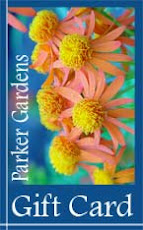The perfect accompaniment to holiday decorating.
Today's florist cyclamen are hybrids of the cyclamen that were originally native to Greece and Syria. They are actually considered to be a low growing herb and a member of the primrose family. Their colorful, long lasting flowers and heart-shaped leaves are attractively veined with silver and have made them very popular as centerpiece and gift plants.
Cyclamen flowers may be single, double, fringed, bicolor, or even striped. Colors range from exquisitely pure white to all shades of pink, lavender, purple, red, and a dark wine-like shade. Some of the miniature strains can be delightfully scented. In addition, today's hybrids can be maintained over a wide temperature range from the upper 30's to normal home temperatures. Individual flowers as well as the blooming season will be extended if the plants can be kept at cooler temperatures rather than warmer.
Provide part sun through full sun, or the artificial light equivalent, to keep plants compact and flowers from stretching and failing to open. Plants grown in insufficient light typically stretch and become weak. Lower leaves will fade and yellow.
Care in the Home
- Cyclamen should be watered thoroughly when the soil looks and feels dry on the surface. Do not over water or allow the plants to stand in water for any length of time. Plants that are allowed to wilt or get too much water will get yellow leaves.
- As part of regular maintenance, spent blooms should be plucked.
- Fertilize plants lightly while in bloom. During late spring and summer when not in bloom, the fertilizer rate should be cut in half.
- Year round, it is important to provide good air movement around your plants. Plants that are in tight quarters and placed too tightly together are prone to fungal attack.
Cyclamen can provide a real pop of color over the holidays and well cared for plants will continue to bloom well into early spring before going dormant.
For more gardening information, or to submit your own questions, feel free to email me at tracy@parkerplants.com.














